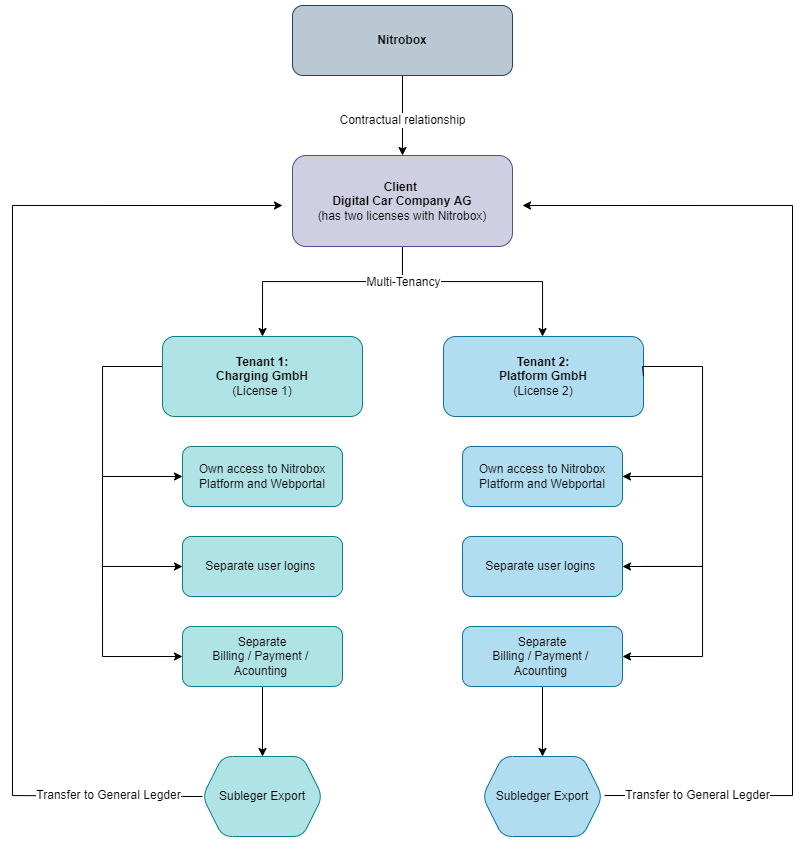Multi-Tenancy
A Nitrobox client can have multiple tenants, e.g. a worldwide operating company with multiple, independent national companies where each company is its own legal entity. An indication of multiple tenants would be separate general ledgers between the legal entities for example.
On the Nitrobox Platform the client has the contractual relationship with Nitrobox and the tenant is the technical unit for using the Nitrobox Platform.
Depending on the client's business structure, a client can have (and need) several tenants. Each tenant requires its own Nitrobox license. If a Nitrobox customer has more than one tenant, it is referred to as multi-tenancy.
Multi-Tenancy Example
The Digital Car Company AG has two subunits: the "Charging GmbH" and the "Platform GmbH" which are independent companies and want to monetize their respective business models with Nitrobox.
Both companies have to be operated as separate tenants in the Nitrobox Platform and therefore, two Nitrobox licenses are necessary.
The scenario looks as following:
Client: Digital Car Company AG (contractual relationship with Nitrobox)
Tenant 1: Charging GmbH (separate technical unit in the Nitrobox Platform), 1 license necessary
Tenant 2: Platform GmbH (separate technical unit in the Nitrobox Platform), 1 license necessary
Total: 2 Nitrobox licenses owned by Digital Car Company AG
Each tenant has its own access to the Nitrobox Webportal, its own users, business models etc - all data is completely separated between tenants will be reported on separately as well.

Multi-Tenancy in the Nitrobox Platform
Single-Tenancy
Note: However, if the subunits are not separate legal entities but one and the same company, a single tenant would be sufficient. If you want separate reporting for these, you can do so using separate billing groups and business segments. In this context, the topic of operating sites for billing and accounting must also be considered.
Updated 12 months ago
